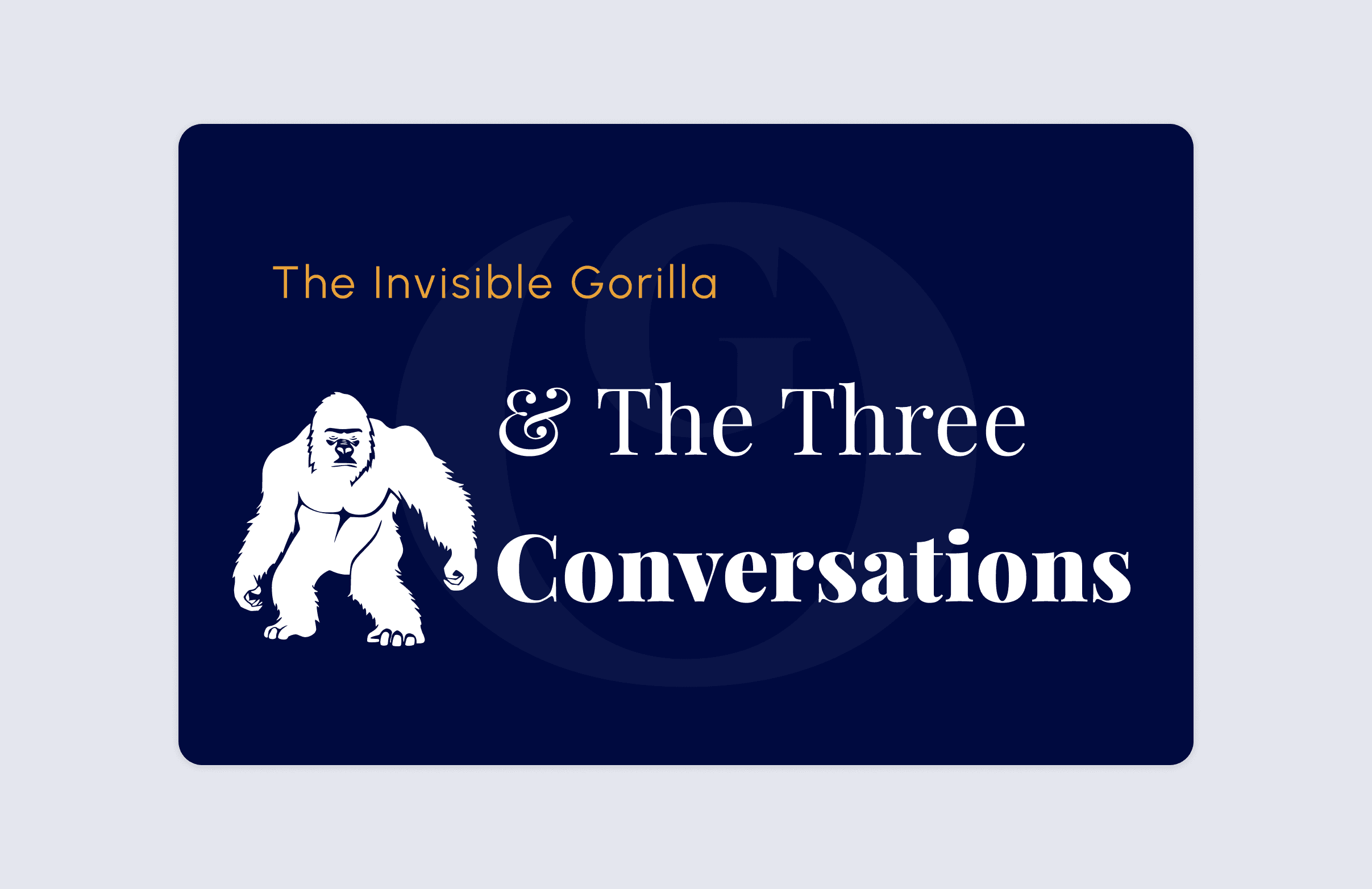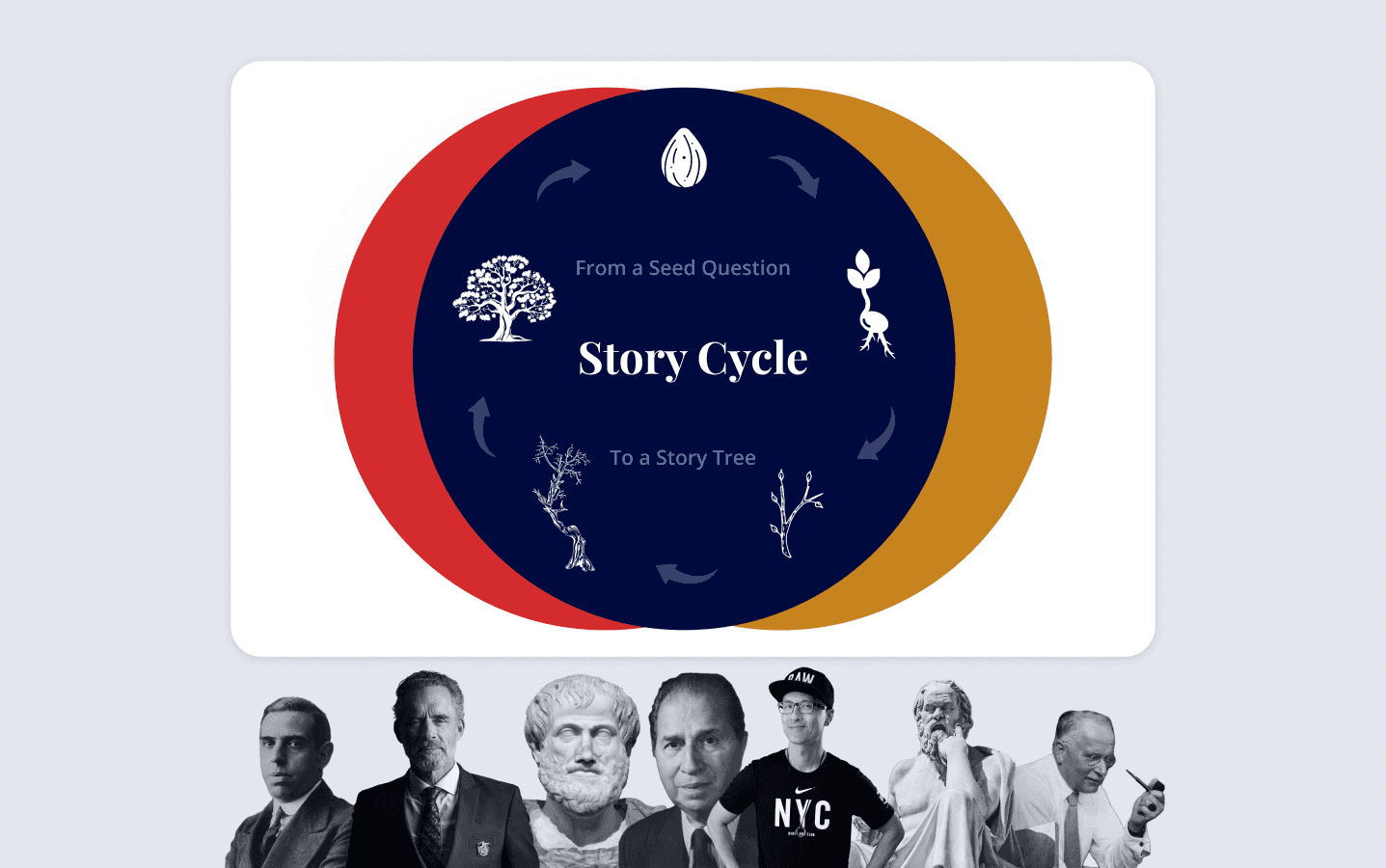
Product Designer, Mentor
In the fast-paced modern world, the quest for self-improvement often involves introspection and self-reflection. While these solo activities are essential for self-awareness, they have their limitations. This i belive is where collaborative dialogue comes in, providing the external perspectives and insights that solo reflection might miss.
In this piece, I'll explore a structured approach to dialogue that complements self-reflection, enhancing personal and professional development. This is the three-conversation model for collaborative problem-solving and dialogue.

The Inspiration Behind the Three-Conversation Model
The inspiration for the three-conversation model stemmed from recognizing the inherent limitations of solo self-reflection.
Inattentional blindness by Daniel Simons
We often view the world through a lens shaped by personal biases and past experiences, which can cloud our judgment and hinder comprehensive self-improvement. Personal biases act as filters, leading us to focus on certain aspects while overlooking others. Inattentional blindness, a phenomenon, coined by Dr Daniel Simons in his experiment "The Invisible Gorilla" where focusing intently on one thing makes us miss other important elements, further complicates our self-reflection.
The role of Emotional and situational pressures in personal growth
When under stress or facing sudden changes, our perspective can become distorted, affecting our ability to see the bigger picture. Recognizing these challenges, the three-conversation model was developed to integrate the strengths of dialogue into the process of self-improvement, providing a balanced approach that leverages both introspection and external feedback.
Conversation 1: Talking About Growth
Let's start with the first type of conversation – talking about growth. Imagine sitting down with a peer to share your core values and long-term goals. This conversation is about articulating what truly matters to you and how you plan to achieve it.
When I was exploring my values in mid-2023, I focused on two that stood out: openness and collaboration. Openness helps me connect with a diverse range of people, and collaboration allows me to see different viewpoints, especially when I'm deeply focused on a problem. From these values, I crafted a mission: "To build a strong foundation for social fabric that unites people through challenging and joyful times alike."
Given the magnitude of this goal, I decided to start with a manageable milestone: hosting a dinner and round table discussion to foster vulnerability and connection. During this dinner, I invited people from varied backgrounds, ensuring a mix of social comfort levels. As the host, I guided the conversation with questions like “How would you introduce yourself without mentioning work?” and topics about upbringing and background.
Initially, these discussions seemed to open doors to mutual understanding. However, as the night progressed, I noticed that despite my efforts, a couple of guests seemed unusually uncomfortable. This experience highlighted a critical challenge: personal biases and assumptions can cloud our judgment, making it difficult to create a genuinely open space for dialogue. By sharing these values and goals with a peer, we can gain insights that might otherwise be missed.
Conversation 2: Problem Solving Through Dialogue
The second conversation type focuses on problem-solving. After receiving feedback from my guests, I had a reflective conversation with Abby. She pointed out something I hadn't realized – vulnerability and connectedness must be voluntary, and a dinner among strangers might not be the best setting for such deep conversations.
This dialogue was eye-opening. It helped me see a significant blind spot: my tendency to project my comfort with openness onto others. Through Abby's feedback, I learned that what seemed harmless to me could feel invasive to others. This conversation structure involves identifying obstacles, discussing the problem in detail, and exploring different approaches to overcome it.
By engaging in this type of dialogue, we tackle the challenge of inattentional blindness. When we face problems alone, we might miss crucial details or alternative solutions. Collaborative problem-solving allows us to see beyond our narrow focus, incorporating diverse perspectives to find more effective strategies.
Conversation 3: Reflecting on Progress and Future Planning
The third conversation type is all about reflecting on progress and planning future steps. After the dinner event, I reflected on the experience with Abby. While the dinner was a step towards my mission, it also revealed areas for improvement. I realized that being a participant in a discussion doesn't necessarily equip one to lead it effectively. This insight led me to a crossroads: should I pivot and find other ways to strengthen social bonds, or persevere with the dinners while improving my facilitation skills?
This type of conversation involves celebrating achievements, analyzing setbacks, and setting new goals. It's essential for continuous growth and maintaining motivation. By regularly reflecting and receiving feedback, we can adjust our approach and ensure our goals remain aligned with our evolving values.
Practical Steps for Implementing the Model
To successfully engage in these conversations, here are some tips:
Be Open and Honest: Share your thoughts and feelings genuinely.
Listen Actively: Pay close attention to your peer's input and feedback.
Set Clear Goals: Define specific, achievable milestones within your Zone of Proximal Development.
Reflect Regularly: Take time to reflect on your progress and adjust your goals as needed.
The three-conversation model offers a structured approach to dialogue that complements self-reflection, enhancing personal and professional growth. By integrating this model into your self-improvement practices, you can overcome the limitations of solo reflection and achieve a deeper understanding of yourself and your goals. Embrace the power of collaborative dialogue and transform your journey of self-discovery.

Product Designer, Mentor


